Every Dynamics 365 implementation involves connections to other systems, utilizing technologies such as oData and custom web services. However, Dynamics 365 lacks built-in functionality to monitor outgoing or incoming requests, leaving no out-of-the-box solution for monitoring or alerts.
Application Insights, a feature of Azure Monitor, enables monitoring for web applications like D365. To integrate Application Insights, we also need Azure API Management (APIM), which acts as a gateway for routing requests to Dynamics 365.
Requirements
To implement this solution, we need to create two Azure services:
- API Management instance
- An instance of the Application Insights service.
Implementation
The first step is to add a new API to APIM. In this example, we’ll use a standard oData service for managing customer data. Additionally, it is crucial to enable the Subscription required parameter to secure the API with a subscription key.
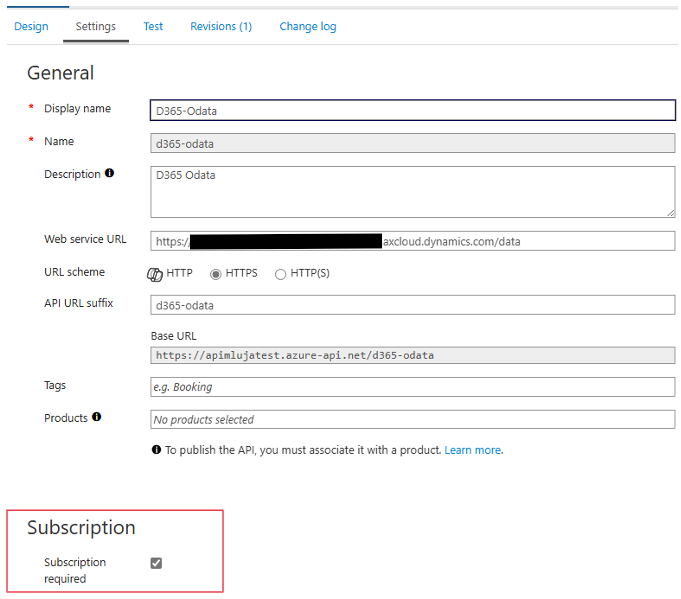
Next on the same screen, I have to enable logging to the Application Insights.
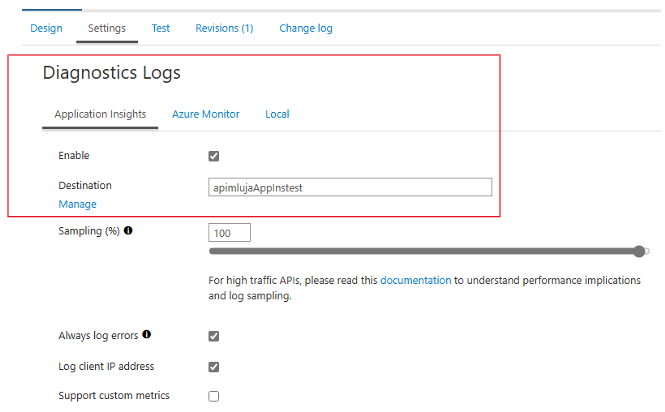
I can choose which operations to log:
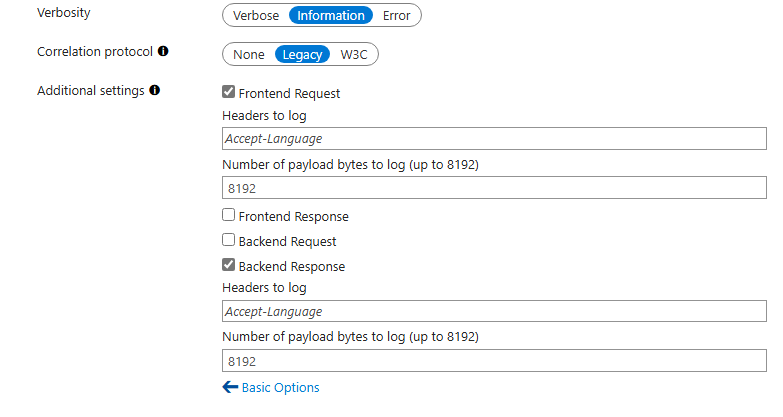
I would like to enable:
- Fronted Request – Incoming request will be registered
- Backend Response – Outgoing response from D365 will be registered
Finally, I have two operations: POST and GET to operate on the oData endpoint:
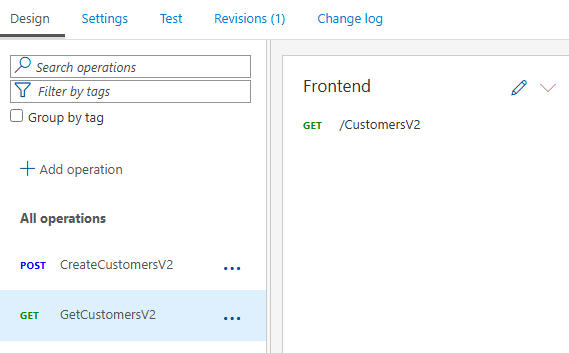
What’s important – we should authenticate if we want to send requests to the D365. To avoid doing this in two steps (first send a request to get the Bearer token and then send the next request to the oData service), we can use the APIM inbound policy.
The policy would look like this:
<inbound>
<base />
<send-request mode="new" response-variable-name="bearerToken" timeout="20" ignore-error="true">
<set-url>{{auth-url}}</set-url>
<set-method>POST</set-method>
<set-header name="Content-Type" exists-action="override">
<value>application/x-www-form-urlencoded</value>
</set-header>
<set-body>@{ return "client_id={{d365-appId}}&resource={{d365-url}}&client_secret={{d365-secret}}&grant_type=client_credentials"; }</set-body>
</send-request>
<set-header name="Authorization" exists-action="override">
<value>@("Bearer " + (String)((IResponse)context.Variables["bearerToken"]).Body.As<JObject>()["access_token"])</value>
</set-header>
<retry condition="@(context.Response.StatusCode == 429)" count="10" interval="10" max-interval="100" delta="10" first-fast-retry="true" />
</inbound>It works by first sending a request to the service responsible for authentication, which returns a token. Then, a request is sent to the target service in D365 with the bearer token included in the header.
So now the address where I can request my D365 application to operate on the customers is as follows:
https://apimlujatest.azure-api.net/d365-odata/CustomersV2
Sending request
Now, I will send the request to the APIM endpoint to create a new customer:
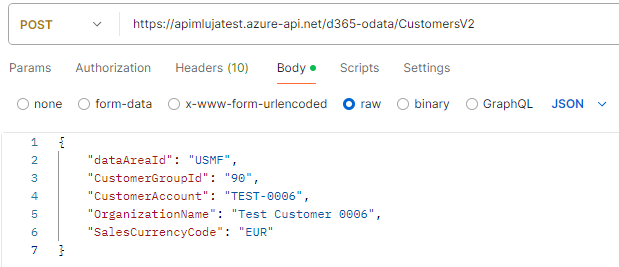
The response looks like this:

I can check the details in the Application Insights:
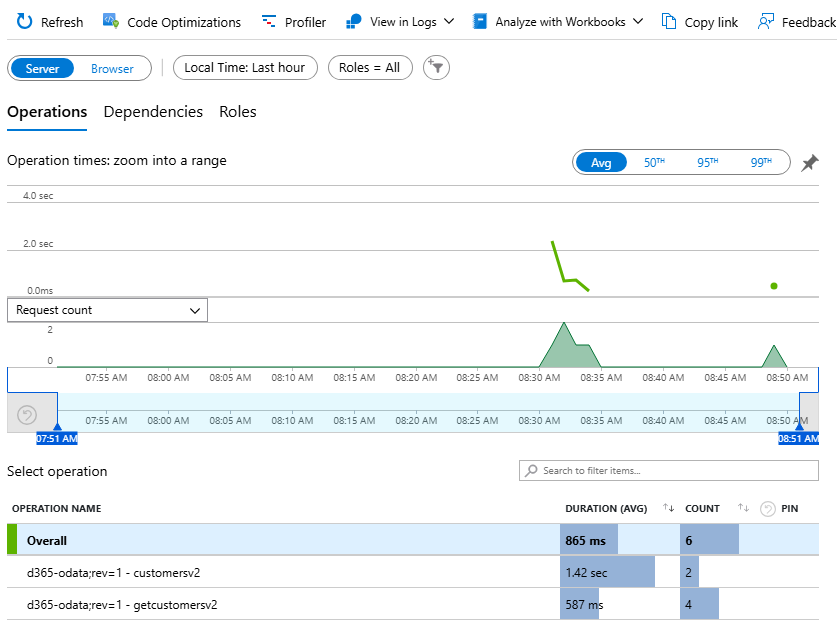
Here are the details of the request and the response:

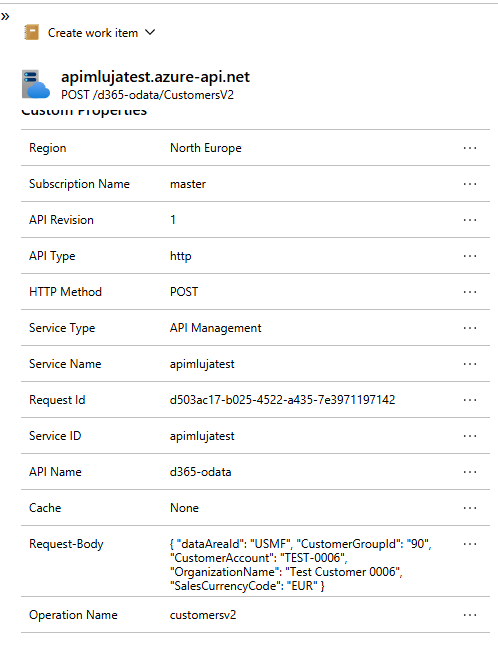
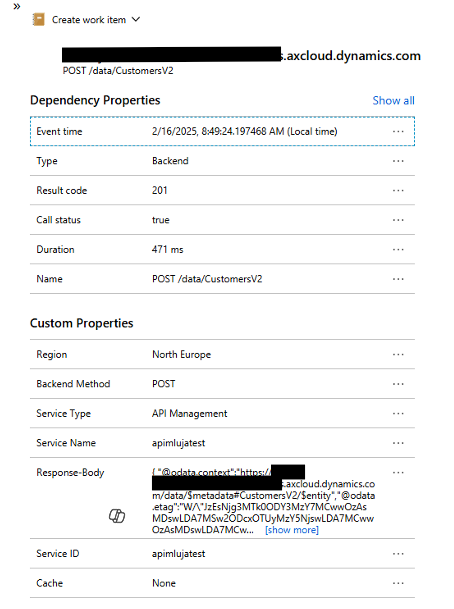
I can also use the KQL to query the logs and find the requests using filters:
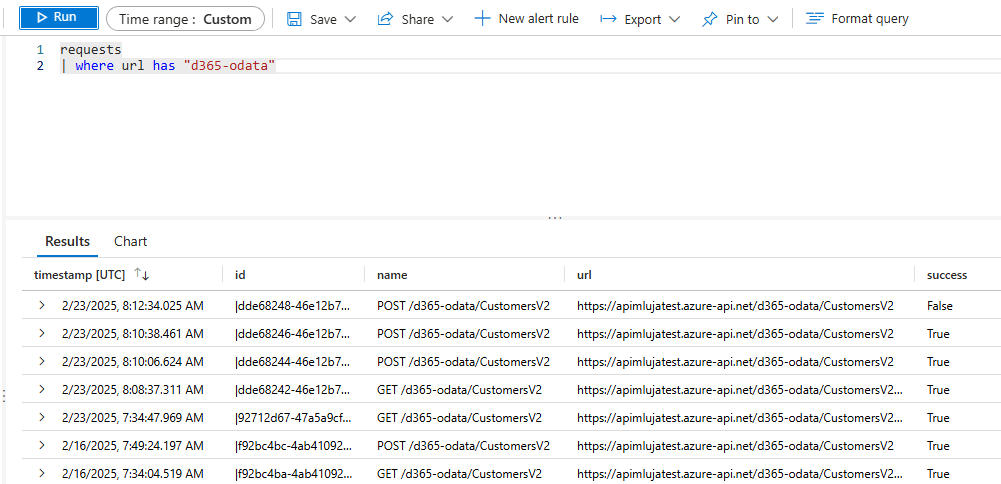
A few final thoughts
I have demonstrated how we can monitor traffic between Dynamics 365 and various systems using Azure API Management and Application Insights. By implementing this solution, we gain better visibility into API traffic, allowing them to track requests, detect anomalies, and troubleshoot potential issues effectively.
